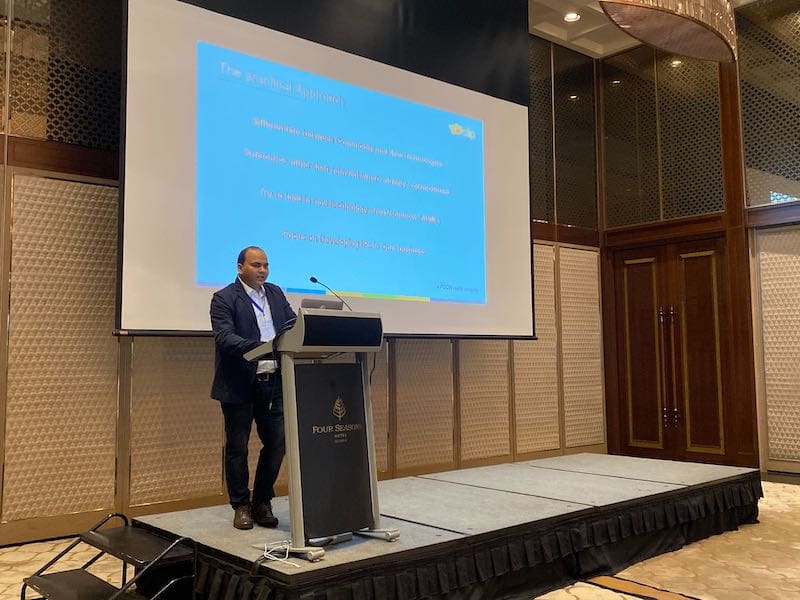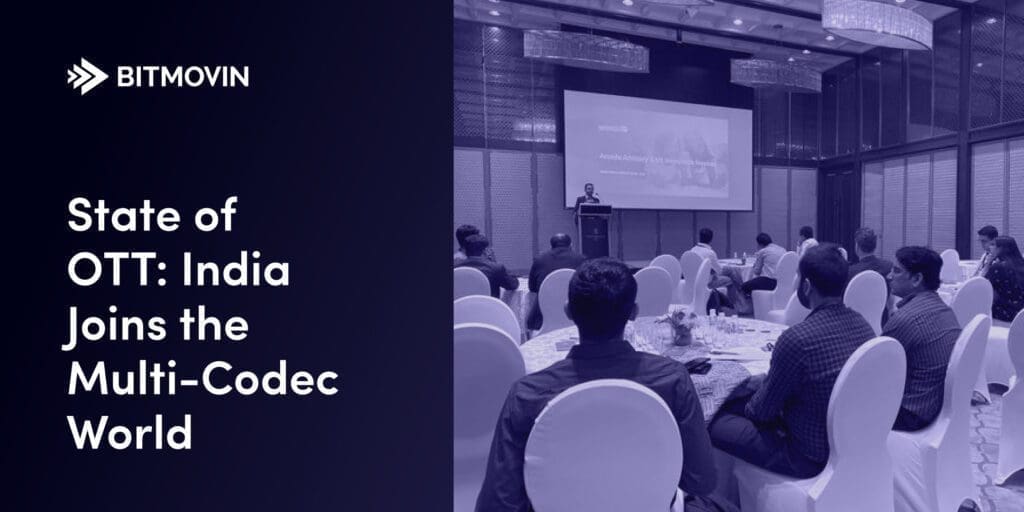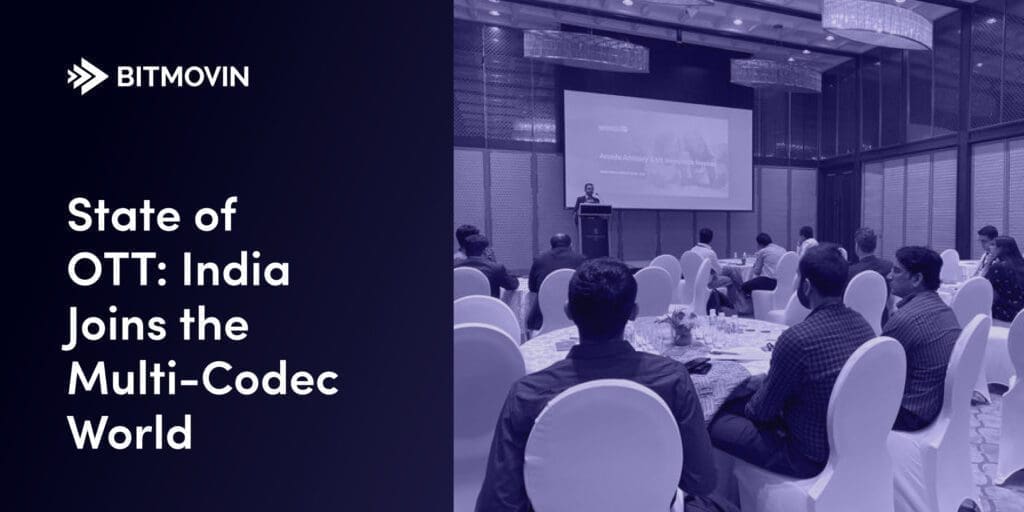At Bitmovin’s Southeast Asia Internet Video Debate 2019, video executives shared hot OTT topics ranging from AI to multi-codec and low-latency
As the orange sun set over the Four Seasons Hotel in Mumbai, senior executives and video engineers from India’s leading Internet video streaming companies gathered together at our first APAC Internet Video Tech Social for a one-of-a-kind debate on the future of Internet Video in India and Southeast Asia.
The industry leaders provided insights directly from the front lines of the quickly evolving OTT video landscape at the half-day event. Here were our learnings from this unique event.

The sun sets over Four Seasons Hotel Mumbai, Tuesday, October 15, 2019
“Reverse conference” led to robust debate
The event brought together a unique mix of attendees ranging from senior executives to engineers, product leaders, sales and marketing. Companies represented an industry cross-section of both customer facing OTT providers such as Vuclip and back office technology providers such as Accedo and Irdeto.
Instead of coming to a main event — the attendees were the main event! Throughout the room Bitmovin had set up tables for groups of 5 or 6 people each from a diverse cross section of the industry. The MC at the front of the hall led a quick pace of new topics and questions to get the discussion and debates heating up!
India is now a multi-codec country!
This was a debate, so there were many disagreements. But one thing almost everyone agreed was that India is now a multi-codec country — H.264 is no longer the only codec in town!

For years, the venerable video codec H.264, also known as Advanced Video Coding (AVC), has remained king of video codecs partially because of its value as a “lowest common denominator” codec: almost every device with a screen supports some sort of H.264 video codec playback whether iOS, Android, PCs, set-top-box or even a knockoff phone.
But this convenience comes with a cost to viewers: the newer phones we have in our pockets now come with beefier processors and dedicated hardware decoders with fancier, next generation codecs beyond that go far beyond H.264. This means most consumers and OTT providers waste bandwidth — and viewer battery life — on low quality video.
But the ecosystem of VP9 is here to the rescue! Thanks to the proliferation of Android and Chrome across India, VP9 came up time and again in discussions as a compelling alternative to H.264 with excellent bitrate profiles and deployment capabilities. Device and browser support across much of India and South Asia more generally is increasing to the point where all service providers of reasonable volume are already transcoding into VP9 if not at least exploring next steps to enter the multi-codec world.
Lower latency and sports are fast friends
Low latency through CMAF is seeing continued interest, especially for sports, betting and other live situations where lower latency can add significant viewer value. Attendees seem to accept the importance of a low latency standard and specifically mention CMAF and the positive impact it could bring to the streaming business.
Agree to disagree on AI
The discussion of artificial intelligence brought out genuine disagreement. Viewpoints ranged from true believers who are already exploring AI into their video workflow to skeptics who can’t see past the marketing hype.
Of supporters, some are already integrating AI in the form of object detection, audio transcription or enhanced encoding. These supporters point to those examples proving early commercial viability.
AI detractors made statements that can be summarized as “Examples of speech-to-text have been around for decades and while AI is continuing to get better, things like transcription still show best results having a human in the loop” — especially needed for regulatory compliance such as FCC compliant captions. Others go further to say AI is really just a recycled marketing hype — instead of AI using the word “algorithm” is just not as exciting as the prospect of a sentient computer.
Focus on developing your core value
Keynote speaker Praveen Singh helped the audience apply ideas to reality. In his role as Head of OTT content and video platforms at Vuclip, a PCCW Media Company, he’s collected a large collection of shared tales on creating multi-region OTT technologies.
His practical advice for entrepreneurial OTT platforms and growing video distributors is to be sure to focus on your unique advantage. Don’t reinvent the wheel! Instead, outsource commodity technology rather than reinventing what’s already been commoditized. Spend time focusing on developing IP in your core business.

Keynote presentation from Praveen Singh, Head of OTT content and video platforms at Vuclip, a PCCW Media Company, Four Seasons Hotel Mumbai, Tuesday, October 15, 2019
One word?
When we asked David Godfrey, Head of APAC for Bitmovin how to summarize the debate and India OTT market in one word: “VP9.” Adoption of Android and Chrome in India is significant — it’s a multi-codec world!





